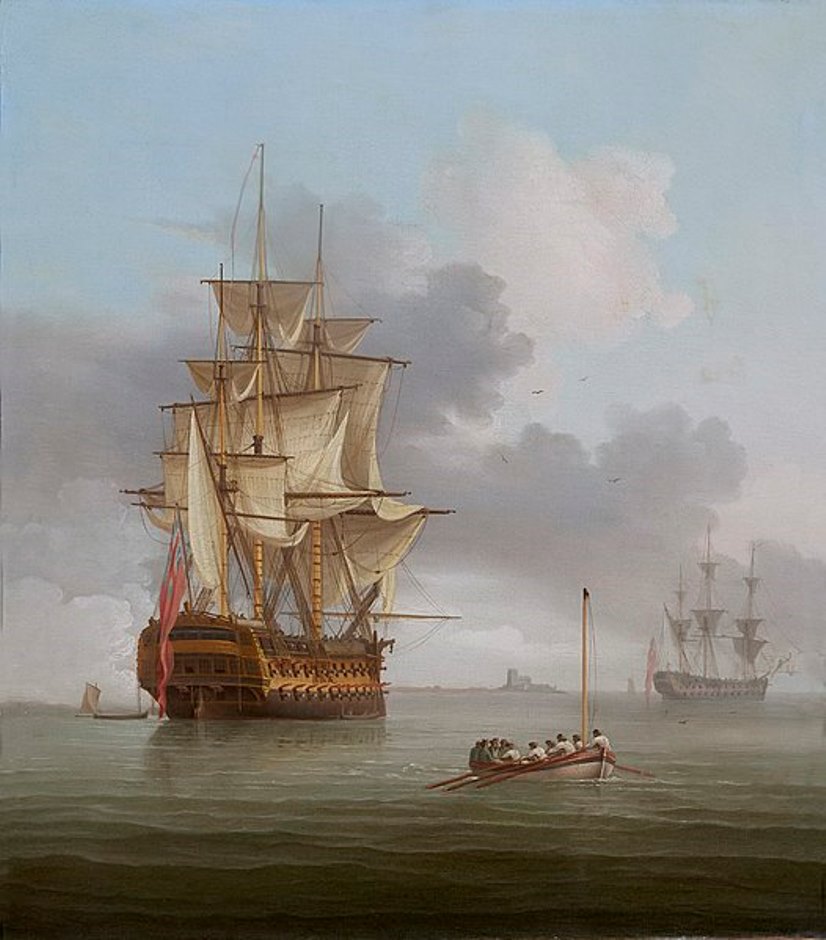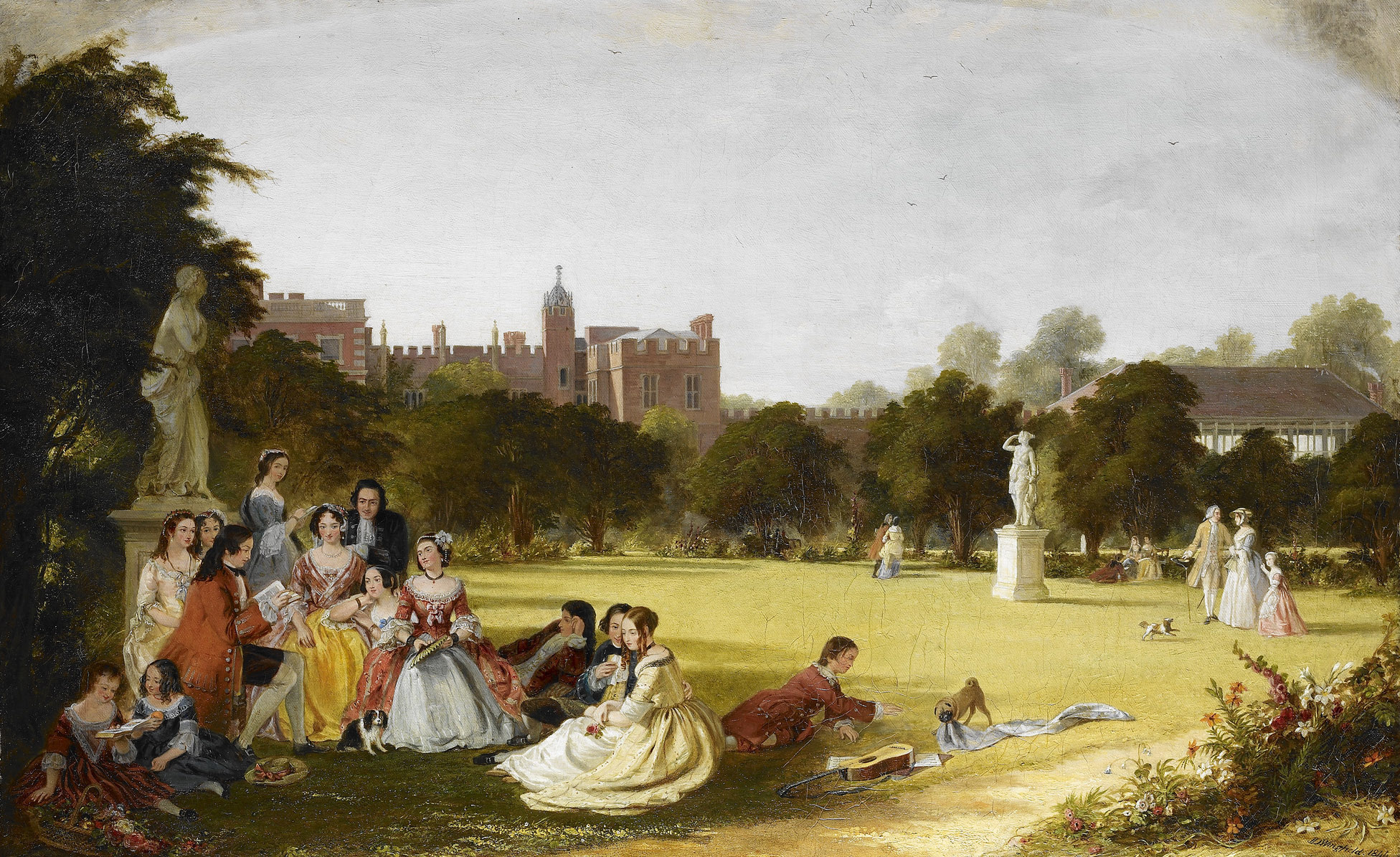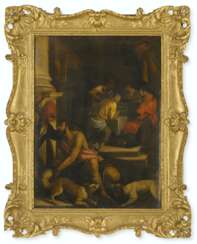
Paintings — Wilton Crescent: A Robert Kime Interior

Thomas Whitcombe was a British marine painter.
Whitcombe is one of the foremost battle painters of the French Revolution and Napoleon I's wars. He produced many paintings depicting Royal Navy combat, including naval battles, depictions of ships, coastal scenes with ships and ships in a storm. He also produced 50 illustrations for the almanac of Britain's Naval Achievements (1817).
Whitcombe exhibited at the Royal Academy, the British Institution and the Royal Society of British Artists. Whitcomb's works are highly accurate in detail and meticulously rendered, making them still highly sought after today.

Sidney Richard Percy, an English landscape painter of the Victorian era, gained recognition for his depictions of grazing cattle set against scenic backgrounds. His landscapes featured earth tones, soft greens, and delicate pastel hues, showcasing remarkable attention to detail. Percy's interest in photography influenced his artwork, incorporating figures from his own photographs of gypsies into his paintings. While some critics disapproved of these additions, Percy's works remained popular during the early part of his career, with patrons including Prince Albert. However, as artistic tastes shifted towards impressionism, Percy's popularity waned. Despite the decline in demand for Victorian landscapes in recent years, his paintings continue to be highly sought after.
Percy's versatility extended beyond oil paintings, as he also created small watercolors on cardboard known as "potboilers." These quickly executed pieces were sold to sustain his income while working on larger, more time-consuming oil paintings. Although he outlived his peak popularity, Percy's contributions to the art world earned him a distinguished place among the Williams family of painters. Today, his artworks command higher prices at auctions compared to his contemporaries, though there has been a reported decrease in demand for Victorian landscapes in recent times. Nonetheless, Sidney Richard Percy's talent and popularity during his time solidify his status as a celebrated painter.

Giulio Romano, an Italian prodigy in painting and architecture, is celebrated for his dynamic contributions to the Renaissance and Mannerist styles. A pivotal figure in the late Renaissance, Giulio Romano was not only Raphael's principal pupil but also a trusted assistant, inheriting his master's workshop upon his death in 1520.
Giulio Romano's artistic journey began under Raphael's tutelage, where he honed his skills in both painting and architecture. His work vividly reflects the essence of the High Renaissance yet also signals the advent of Mannerism, a style characterized by elongated forms and exaggerated emotions. Notably, Romano's architectural prowess was largely self-taught, developed while assisting Raphael, who was the papal architect during that time.
The Palazzo del Te in Mantua stands as a testament to Giulio Romano's architectural genius. This pleasure palace, begun around 1524 and completed a decade later, showcases his inventive spirit and skill. It's a striking example of how Romano played with classical conventions to create something uniquely expressive. His ability to transform spaces was not just limited to grand structures but also extended to designing gardens and facades, enhancing their aesthetics and functionality.
In painting, Giulio Romano's works such as the Stoning of St. Stephen in Santo Stefano, Genoa, and the Adoration of the Magi in the Louvre, demonstrate his mastery and influence. His fresco "Fire in the Borgo" in the Raphael Rooms of the Vatican City is particularly noteworthy. Romano's drawings and designs, revered for their technical skill and creativity, significantly influenced subsequent artists, including Nicolas Poussin.
For art collectors and experts, the works of Giulio Romano present a fascinating blend of Renaissance classicism and the burgeoning Mannerist style. His contributions in both painting and architecture have left an indelible mark on the history of art and culture.
For those interested in staying updated on sales and auction events related to Giulio Romano, consider signing up for updates. This subscription is strictly for alerts on new product sales and auction events relevant to Romano's works. Avoid missing out on acquiring a piece of this Renaissance master's legacy.































































